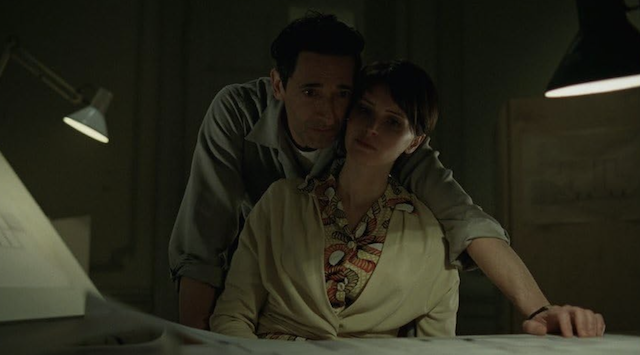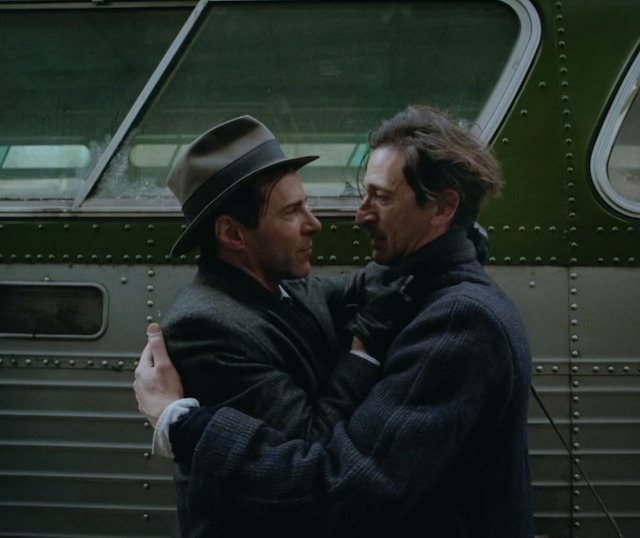
@Courtesy of A24
Fresh winner of the Silver Lion for Best Directing at the Venice Film Festival, The Brutalist directed by Brady Corbet follows the story of the Hungarian architect László Tóth, who emigrated to the United States after surviving the Holocaust. After a brief and complicated stay with his cousin, the man starts facing poverty until one of the richest men in Pennsylvania, Harrison Lee Van Buren, hires him to build a prestigious Recreation Center honoring his deceased mother. After so much suffering László and his wife Erzsébetcan, who joined him after being stuck in Europe for a few years, can finally live the “American Dream”. But the ghosts from the past and a present which isn’t as promising as it seemed, are going to haunt the couple and their hope of a better life…
Adrien Brody is the heart and soul of The Brutalist, with a performance that is by far his best since The Pianist, which earned him an Academy Award as best leading actor. His capacity to add nuances to such complex psychology, being able to add drama or subtract when necessary, makes László Tóth a figure worth remembering, especially because – and this is probably the main issue of the movie – it is basically composed of two characters who don’t connect too well with each other: the dark side of this man, haunted from the horror of the past and incapable of getting rid of his addiction, seems too often to be another man compared to the genius of architecture who fights everyone and everything in order to achieve his masterpiece.
The screenplay written by Corbet together with Mona Fastvold tries in vain to make these sides of László co-exist, with the effect of making The Brutalist way longer than necessary, more than three hours and a half. If it doesn’t get boring it is just because of Brody, always capable of being compelling. This layered performance seems to be his own personal achievement because Brady Corbet doesn’t get the same result from the rest of the cast, actually the other way around: Alessandro Nivola and Joe Alwyn in their roles are quite effective, while Guy Pearce and especially Felicity Jones become pretty soon the weak link of the cast, developing their roles without any restrain.
Corbet seems definitely more focused on the aesthetic of the Brutalist, which is in many scenes quite remarkable. The second part of the movie is visually stunning, thanks also to the cinematography by Laurie “Lol” Crawley and her use of shadows and the absence of light. The director fills his saga with a few great moments of cinema, demonstrating that he studied pretty well the lessons of great authors like Paul Thomas Anderson, especially some stunning movies like There Will Be Blood and The Master.

@Courtesy of A24
At the end of The Brutalist, even if admiring the work done by its creator in order to achieve such an elegant and complex movie, we left the press screening at the New York Film Festival uncertain if Brady Corbet’s movie is about the journey of a Holocaust survivor who is constantly forced to deal with the pain of what he experienced, or it’s a movie about the dark, violent, abusive side of the “American Dream”.
This could actually mean that The Brutalist is both these stories, just not completely capable of making them just a cohesive one. Corbet is clearly on the right path to becoming a good, maybe a great director, but right now he needs to work on developing some clarity about what he wants to tell with his stories, maybe even at the cost of cutting something from his own vision.
Rate: C+
If you like the articles, share your thoughts below!
Check out more of Adriano’s articles.

